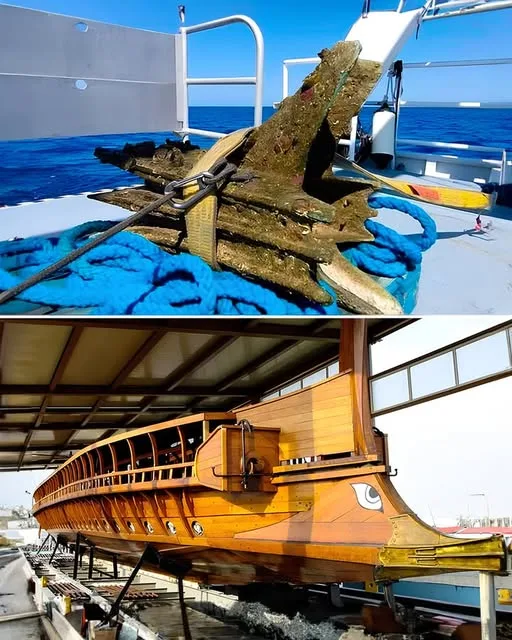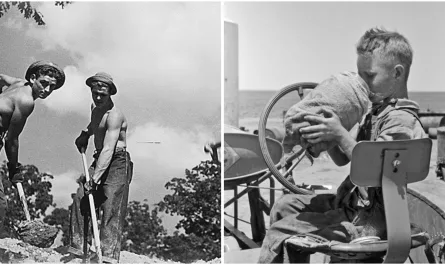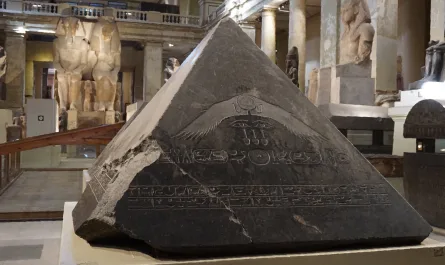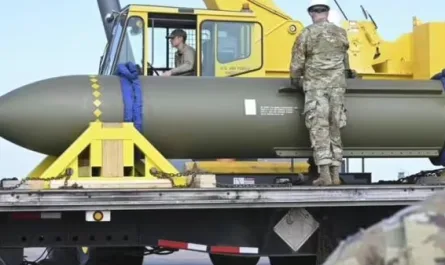In August 2024, a remarkable archaeological find emerged from the depths of the Mediterranean Sea off the coast of Sicily, captivating historians and diving enthusiasts alike. A bronze battering ram, a relic from an ancient Roman warship, was discovered near the site of the Battle of the Aegates, a pivotal moment in the First Punic War. Unearthed at a depth of 260 feet by deep-sea explorers using advanced submarine technology, this artifact offers a tangible connection to a decisive conflict that shaped the ancient world.

A Relic of Naval Warfare
The battering ram, dating back to 241 BC, was once affixed to the bow of a Roman warship and played a crucial role in naval combat. Adorned with an intricate relief of a Montefortino-style helmet, this weapon was designed to ram and disable enemy vessels, a tactic that proved instrumental in the Roman victory at the Battle of the Aegates. The discovery of this ram, one of over 25 found in the area, underscores the intensity of the battle and the sophistication of Roman naval engineering.
The Battle of the Aegates: A Turning Point
The Battle of the Aegates, fought on March 10, 241 BC, marked a turning point in the First Punic War, a grueling 23-year conflict between Rome and Carthage. According to the ancient historian Polybius, the Roman fleet, under the command of Gaius Lutatius Catulus, destroyed 50 Carthaginian ships, captured 70 more, and took nearly 10,000 sailors prisoner. This decisive victory forced Carthage to sue for peace, ceding Sicily to Rome and ending the war. The underwater site near the Aegadian Islands, where the ram was found, has since been recognized as one of the most significant underwater battlefields, preserving a wealth of artifacts that illuminate this historic event.
A Treasure Trove of Artifacts
The discovery site has yielded more than just battering rams. Alongside the rams, archaeologists have uncovered helmets, swords, and amphorae—ceramic vessels once used to store goods. These finds paint a vivid picture of the battle’s aftermath, where sunken ships and lost equipment settled into the seabed. The preservation of these artifacts at such depth has kept them remarkably intact, offering invaluable insights into ancient naval warfare and the daily lives of the sailors who fought.
Ongoing Exploration
This underwater treasure trove is the result of a project initiated by the late archaeologist Sebastiano Tusa, whose vision continues to guide ongoing excavations. Planned to extend over the next two decades, these explorations promise to unearth more relics and deepen our understanding of the First Punic War. The use of modern submarine technology has opened new frontiers in underwater archaeology, ensuring that the secrets of the Aegates battlefield will continue to surface.
Visiting the Legacy
While the site itself lies deep underwater and is inaccessible to casual divers, the discovery has sparked renewed interest in Sicily’s rich history. Museums in the region, such as the Regional Archaeological Museum Antonio Salinas in Palermo, may soon showcase these finds. For those planning a trip, the nearby Aegadian Islands offer a chance to reflect on this ancient battle while enjoying the Mediterranean’s crystal-clear waters.
Final Thoughts
The bronze battering ram from the Battle of the Aegates is more than an artifact—it’s a window into a defining moment when Rome rose as a Mediterranean power. As explorations continue, each new find will add to the narrative of courage, strategy, and loss that unfolded beneath the waves. For history buffs and adventurers, this ongoing discovery off Sicily’s coast is a reminder of the enduring mysteries waiting to be revealed.





